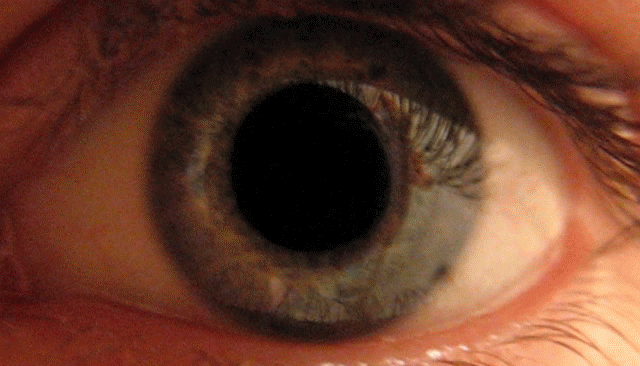According to William Shakespeare, eyes are the windows of the soul. This opinion was shared by Guillaume de Salluste Du Bartas, reflecting early Anglo-French poetic harmonization. By contrast, Neil Shubin in his book Your Inner Fish offered a slightly less ephemeral opinion: “When you look into eyes, forget about romance, creation, and the windows into the soul. With their molecules, genes, and tissues derived from microbes, jellyfish, worms, and flies, you see an entire menagerie.”
So what do eyes do, besides providing vision to their beholder?
Cognitive psychologists have long used eyes as a window perhaps not into the soul but into cognitive performance. There have been at least four recent posts on this website about research involving the measurement of eye movements: For example, listening to music alters people’s eye movements in a manner that is suggestive of attention being focused inward. Eye movements can reveal whether or not people are distracted during visual search or whether they ignore irrelevant items. And the eye movements of three-month old babies even reveal whether they were brought into this world by caesarian section or by natural birth.
A recent article in the Psychonomic Bulletin & Review has opened another window into cognitive performance by looking not at the eyes’ movement but at pupillary dilation within the eye. The animation below shows the impressive extent of this response:

“Eye dilate” by Greyson Orlando – Own work. Licensed under Public Domain via Commons.
Pupillary responses are known to reflect a wide range of mental states, from emotion to attention and decision making. Researchers Hsin-I Liao and colleagues focused on one aspect of pupillary responding, namely that it may signal salient auditory stimulus detection. That is, previous research has suggested that the pupil dilates in response to “deviant” auditory oddballs that are embedded in an auditory stream. For example, if you are listening to mellow piano music and the stream of notes is interrupted by a car honking, then your pupil is dilating in response to this particularly salient sound.
Liao and colleagues were interested in validating this suggested role of pupillary dilation by linking it to people’s subjective ratings of “salience” (actually, they measured various attributes of salience but we can safely ignore that nuance).
In the first phase of the experiment, participants simply listened to a variety of sounds while their pupil dilations were measured. The sounds could be synthesized, such as tones, noise, chirps, and beeps, or could be naturally occurring in the environment, such as a dog barking, a bird singing, a phone ringing, nails scratching, a human crying, or a human laughing. The spectrograms of the various sounds are shown in the figure below:

Setting aside the details of the graphs, it is quite clear that the stimuli differed considerably from each other, thereby ensuring that people would most likely respond differently to the various sounds.
In the second phase of the experiment, participants again listened to the sounds, but this time they came in pairs. Specifically, all 45 possible pairings of the 10 stimuli (e.g., tone and scratch, dog and laughter, and so on) were presented in random order, and participants had to indicate which of the two sounds in each pair they found to be more salient. Across all trials, those choices could be converted—via a mathematical technique known as Thurstonian scaling—into a “salience” score for each stimulus.
Emphasis during analysis was on the association between the judged salience score for each stimulus and the pupillary dilation that same stimulus elicited in the first phase of the experiment. Liao and colleagues found that there was a strong positive association between judged salience and observed pupil dilation: nearly two thirds of the variance in pupil dilation was explained by people’s subjective judgments of salience.
The data from this study also revealed that it was the loudness of the stimulus that was the primary determinant of salience. Note that loudness is a subjective quantity, which is somehow related to, but cannot be directly derived by physical energy, represented as sound pressure level (SPL in decibels, dB). Loudness depends on frequency contents and temporal structure of the stimulus. In Liao’s experiment, the stimuli were equaled in SPL (with some corrections reflecting ear’s frequency response).
Liao and colleagues therefore conducted two follow-on studies in which they tried to disentangle the effects of loudness from other aspects of what might be called salience.
In a second study, the same stimuli were used but they were equalized for loudness. (Equalizing loudness is no trivial task and involves acceptance of a particular model of loudness, but those details need not concern us here.) The results showed a strong association between judged salience and judged loudness (i.e., the loudness scale derived by the Thurstonian model), but no association between pupillary responses and any of the subjective rating measures. In a final, third study, the loudness of thesame stimuli (a tone and a noise) was varied, and pupillary dilation was again found to be a function of loudness.
Taken together, the results from the three studies have several implications: First, what people consider “salience” is largely determined by the loudness with which a sound is experienced. Second, the psychological experience of loudness is not (or at least not entirely) determined by the physical attributes of the stimulus (recall that in the second study stimuli were of equal loudness derived by acoustical properties but not by judged loudness). Finally, the pupillary response to sounds is constant when their loudness is identical (second study), and the pupillary dilation is a function of loudness when the intensity of the same stimuli is varied (third study).
The figure below summarizes the data across the three studies. It is clear that pupillary diameter is a function of the loudness of a stimulus.

So are eyes windows into the soul? Perhaps, and we now know that the louder a sound, the more the curtains are drawn to reveal whatever is shown in our eyes.

2 Comments